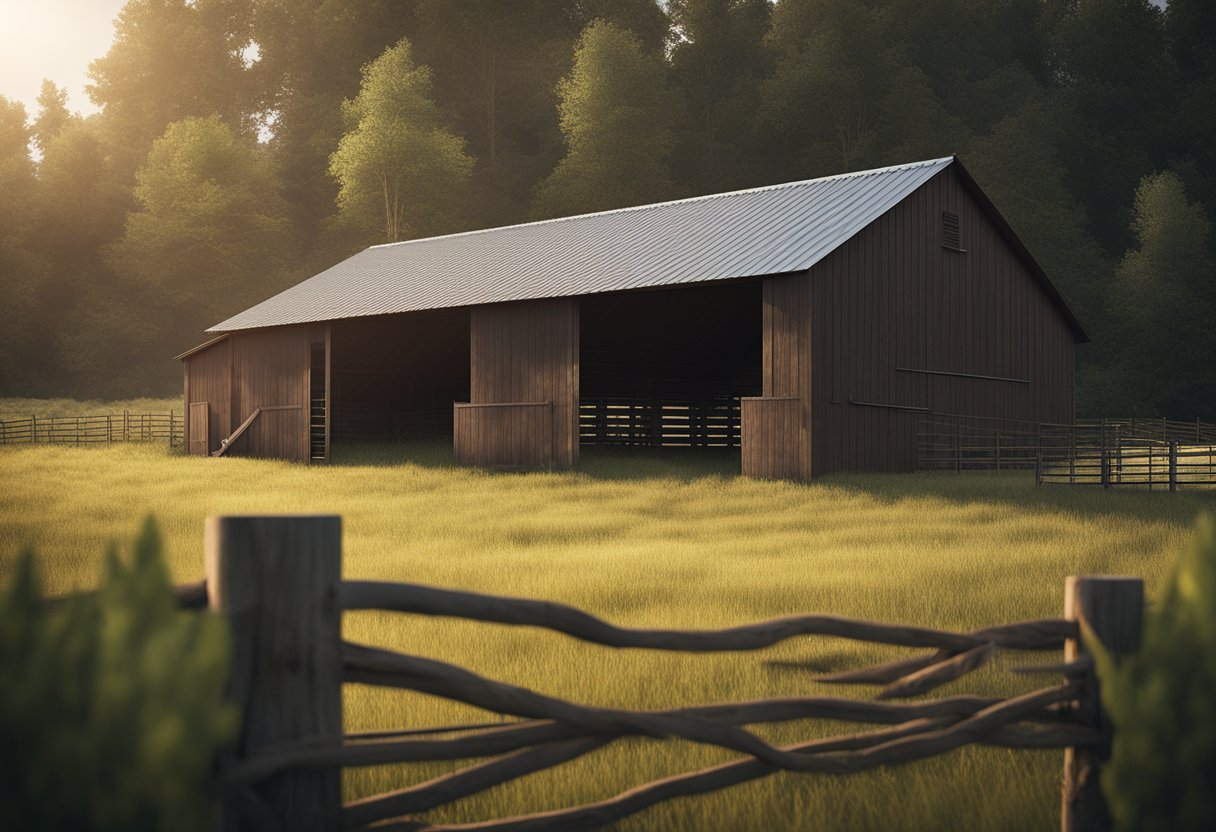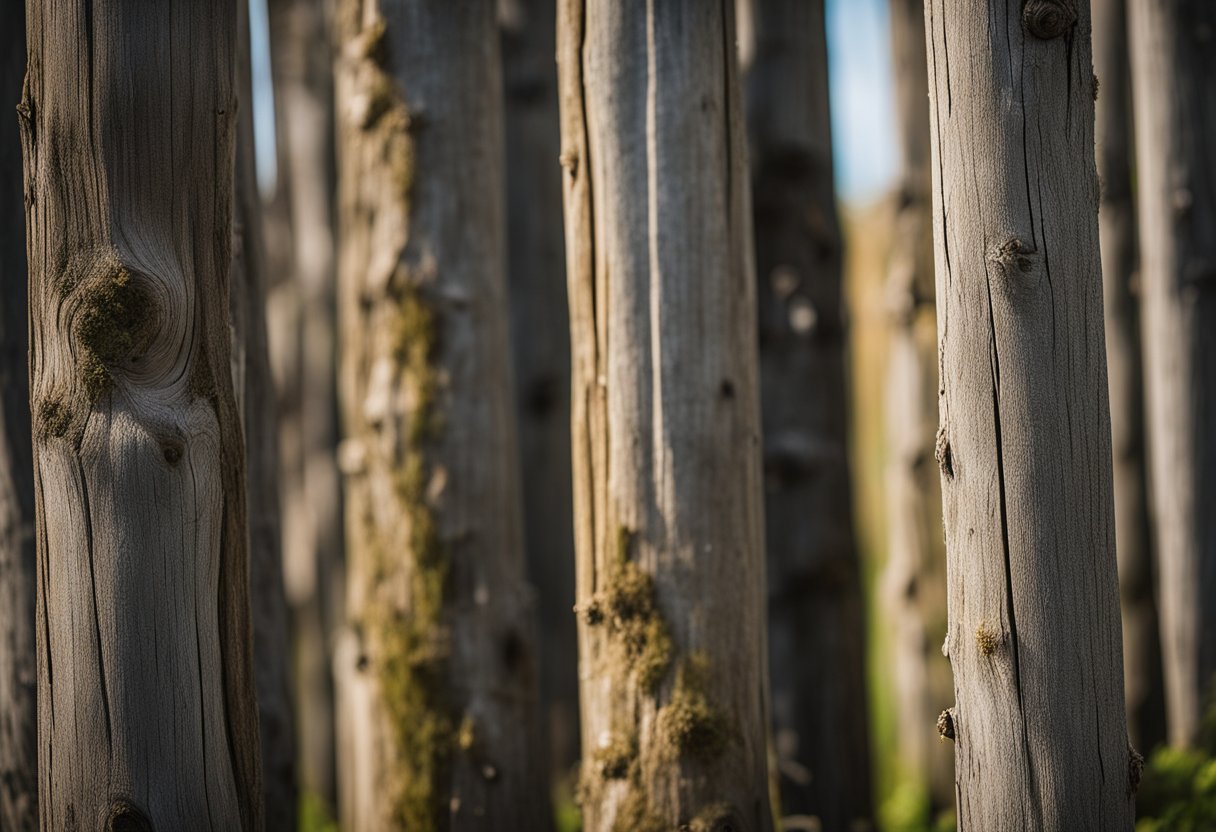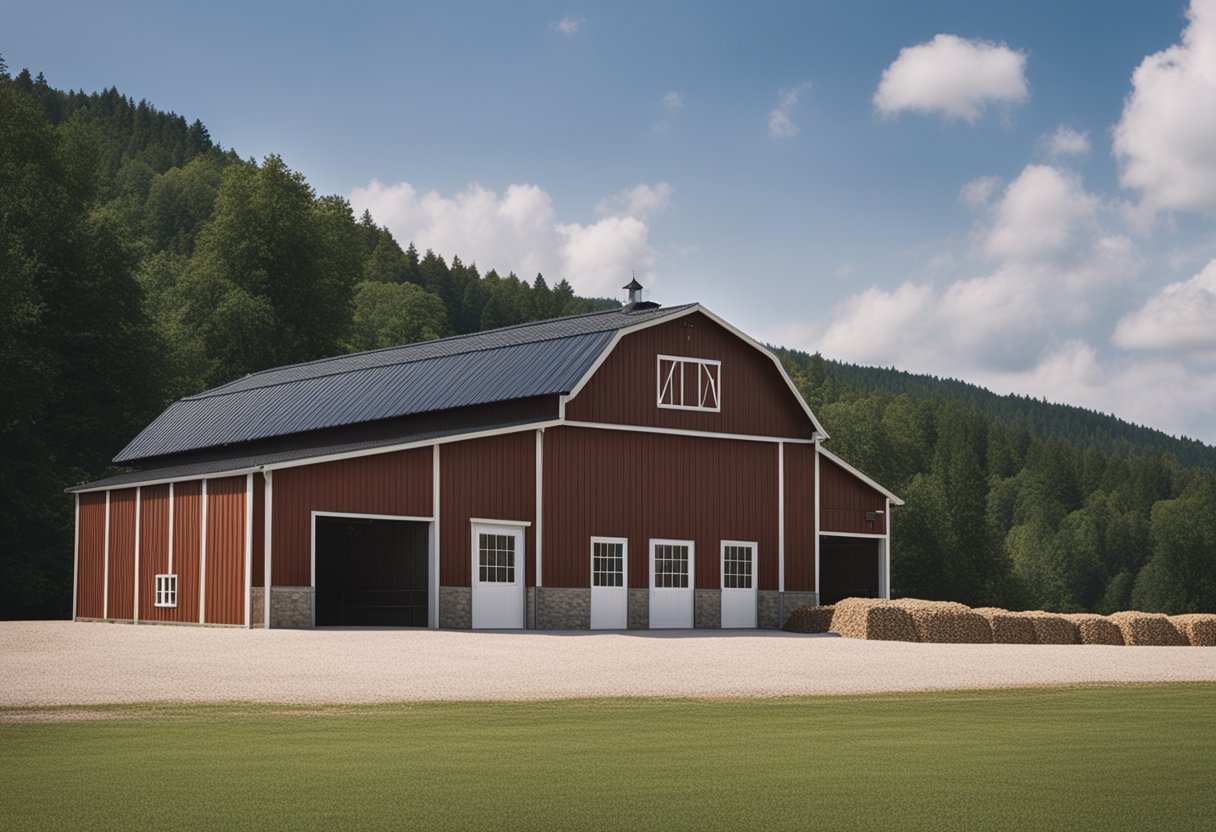As a pole barn owner, you want to ensure that your investment lasts for many years to come. One of the most common issues that pole barn owners face is rotting of the pole barn posts. Pole barn rotting can be caused by various factors such as weather, moisture, and fungi. Rotting can compromise the structural integrity of the building and lead to costly repairs. Therefore, it is essential to take preventative measures to keep your pole barn posts from rotting.

Understanding pole barn rot is the first step in preventing it. Pole barn rotting can occur when the wood is exposed to moisture, which can lead to the growth of fungi. Fungi feed on the wood, and over time, the wood deteriorates, leading to rotting. Additionally, insect infestations can also cause rotting as they create entry points for moisture and fungi. By understanding the causes of pole barn rot, you can take preventative measures to keep your pole barn posts from rotting.
Preventing rot in pole barn posts involves several construction techniques such as using pressure-treated wood, proper drainage, and ventilation. Pressure-treated wood is resistant to moisture and fungi, making it an excellent choice for pole barn posts. Proper drainage and ventilation can also help prevent moisture buildup, which can lead to rotting. By using the right construction techniques, you can ensure that your pole barn posts are protected from rotting.
Key Takeaways
- Understanding the causes of pole barn rot is the first step in preventing it.
- Preventing rot in pole barn posts involves using construction techniques such as pressure-treated wood, proper drainage, and ventilation.
- Site selection, maintenance, and repair of pole barns are essential in preventing rot and ensuring the longevity of your investment.
Understanding Pole Barn Rot
https://www.youtube.com/watch?v=HMUFjEsaGEg&embed=true
As a pole barn owner, it is important to understand the causes of pole barn rot. Rot is a form of decay that is activated by moisture and fungi growth. Fungi grow in damp conditions, so you don’t have to worry about the spores forming on dry wood. Moreover, the wood must be continuously wet for fungi to germinate.
Wood is the primary material used in pole barn construction, and it is susceptible to decay. Decay is a natural process that occurs when wood is exposed to moisture and oxygen. When wood is exposed to moisture, it absorbs water, which causes it to swell. As the wood dries, it shrinks. This process can cause the wood to crack and split, which can lead to decay.
Fungi are the primary cause of wood decay. Fungi are microscopic organisms that feed on wood. They secrete enzymes that break down the wood’s cell walls, which allows them to extract nutrients from the wood. Fungi can also produce spores, which can spread to other parts of the wood and cause further decay.
Wood-eating fungi are common in damp environments, such as pole barns. They can cause significant damage to the wood, which can compromise the structural integrity of the pole barn. Decay is a slow process, and it can take years for the wood to become severely damaged.
To prevent pole barn rot, it is essential to keep the wood dry. Moisture is the primary cause of decay, so it is crucial to prevent water from accumulating on or around the wood. Proper drainage is essential to prevent water from pooling around the pole barn posts. Additionally, regular inspections can help identify any signs of decay early, which can prevent further damage.
In summary, pole barn rot is a natural process that occurs when wood is exposed to moisture and fungi growth. To prevent pole barn rot, it is crucial to keep the wood dry and prevent water from accumulating on or around the wood. Regular inspections can also help identify any signs of decay early, which can prevent further damage.
Preventing Rot in Pole Barn Posts
https://www.youtube.com/watch?v=uBc9nxGY8o0&embed=true
As a professional carpenter, I have worked with many clients who have experienced rotting in their pole barn posts. Rotting can be caused by many factors, including moisture, rain, and insects. However, there are several ways to prevent rot in pole barn posts, and I will share some of my expertise with you.
Use Pressure-Treated Wood
One of the most effective ways to prevent rot in pole barn posts is to use pressure-treated wood. Pressure-treated wood is treated with chemicals that make it resistant to decay and insects. This type of wood is readily available and affordable, making it a popular choice for pole barn construction. Using pressure-treated wood can significantly increase the lifespan of your pole barn posts.
Apply a Waterproofing Agent
Another way to prevent rot in pole barn posts is to apply a waterproofing agent. A waterproofing agent can help to prevent moisture from penetrating the wood, which can lead to rotting. There are many different types of waterproofing agents available, and it is essential to choose one that is appropriate for the type of wood you are using. Applying a waterproofing agent can be a simple and effective way to prevent rot in pole barn posts.
Install Grade Guard and Post Protector
Installing a grade guard and post protector can also help to prevent rot in pole barn posts. A grade guard is a plastic or metal sleeve that is installed around the base of the post to prevent soil from coming into contact with the wood. A post protector is a plastic or metal sleeve that is installed around the entire post to protect it from moisture and insects. Both of these products can be effective at preventing rot in pole barn posts.
In conclusion, preventing rot in pole barn posts is essential to ensure the longevity of your pole barn. By using pressure-treated wood, applying a waterproofing agent, and installing a grade guard and post protector, you can significantly reduce the risk of rotting in your pole barn posts.
Construction Techniques to Prevent Rot
https://www.youtube.com/watch?v=Di_LdwEowqI&embed=true
As a builder, I have found that using the right construction techniques can help prevent rot in pole barn posts. The following are some techniques that I use:
Pressure-Treated Wood
Pressure-treated wood is a popular choice for pole barn construction because it is resistant to rot, decay, and insects. The wood is treated with chemicals that prevent moisture from penetrating the wood, making it less susceptible to rot. It is essential to use pressure-treated wood for the posts that will be in contact with the ground, as they are more likely to rot due to moisture.
Concrete Foundation
A concrete foundation is an excellent way to prevent rot in pole barn posts. A concrete slab or perma-columns can be used to provide a solid foundation for the posts. The concrete foundation will prevent moisture from penetrating the wood, preventing rot. When using a concrete foundation, it is essential to make sure that the posts are anchored to the foundation to prevent them from shifting.
Proper Drainage
Proper drainage is crucial for preventing rot in pole barn posts. Water should be directed away from the barn, and the ground around the barn should be sloped to prevent water from pooling around the posts. If water is allowed to pool around the posts, it can cause the wood to rot over time.
Regular Maintenance
Regular maintenance is essential for preventing rot in pole barn posts. The barn should be inspected regularly for leaks, and any leaks should be repaired immediately. If the posts are showing signs of rot, they should be replaced as soon as possible to prevent further damage.
By using these construction techniques, you can help prevent rot in pole barn posts. It is essential to use pressure-treated wood, a concrete foundation, proper drainage, and regular maintenance to keep your pole barn in good condition.
Site Selection and Preparation
https://www.youtube.com/watch?v=mvLTOgYfwIU&embed=true
When it comes to building a pole barn, selecting the right site and preparing it properly are crucial to ensure the longevity of your structure. Here are some tips to keep in mind:
Soil Type and Location
The type of soil and location of your pole barn can have a significant impact on the lifespan of your posts. It’s essential to choose a location with well-draining soil to prevent water from pooling around your posts, which can cause them to rot faster. If you’re unsure about the soil type, you can have a soil test done to determine the soil’s composition and drainage capabilities.
Drainage
Proper drainage is crucial to prevent water from collecting around your pole barn posts, which can lead to rot. Before building your pole barn, make sure the site is graded to allow water to flow away from your structure. Also, consider installing gutters and downspouts to direct rainwater away from your posts.
Site Preparation
Proper site preparation is essential to ensure the longevity of your pole barn posts. Before construction, remove any trees, stumps, or debris from the site to prevent them from interfering with the posts’ installation. Additionally, consider installing a layer of gravel or crushed stone beneath your posts to improve drainage and prevent soil from coming into direct contact with the posts.
By following these tips, you can ensure that your pole barn posts have the best chance of lasting for years to come.
Maintenance and Repair of Pole Barns
https://www.youtube.com/watch?v=VU-chDG6zL4&embed=true
As a pole barn owner, it is important to regularly inspect and maintain your structure to prevent any potential damage or rotting of the posts. Here are some tips to help you keep your pole barn in good condition:
Regular Inspection
I make it a habit to inspect my pole barn at least once a year, especially after harsh weather conditions. During the inspection, I check for any signs of damage, leaks, or rotting in the posts. If I notice any issues, I address them immediately to prevent further damage.
Proper Maintenance
To prevent rotting, I ensure that the area surrounding the pole barn has proper drainage to prevent water accumulation. I also trim any trees or shrubs near the structure to prevent them from touching the roof or walls, which can cause damage.
Repairs
In case of any damage, I make sure to address it immediately. For minor repairs, I use sealant or waterproofing products to prevent further damage. However, for major repairs or pole barn repairs, I seek the help of a professional.
Roof Leaks
Roof leaks can cause significant damage to the pole barn posts and should be addressed immediately. I ensure that the roof is properly sealed and any damaged or missing shingles are replaced promptly.
By following these simple maintenance and repair tips, you can ensure that your pole barn remains in good condition and prevent any potential damage or rotting of the posts.
Cost Considerations

When it comes to building a pole barn, cost is a significant factor to consider. Fortunately, there are ways to keep the cost down while still ensuring the longevity of your pole barn posts. Here are a few cost considerations to keep in mind:
DIY Pole Barns
One of the most effective ways to save money on your pole barn project is to build it yourself. DIY pole barns can be a great option for those who are handy and have some construction experience. By doing the work yourself, you can save on labor costs and have more control over the materials used in the project.
Instant Quote
Getting an instant quote is an excellent way to get an idea of the cost of your pole barn project. Many companies offer online instant quotes that can give you a ballpark estimate of how much you can expect to spend on your project. This can help you plan your budget accordingly and make sure you aren’t overspending on your pole barn posts.
Inexpensive Options
There are many inexpensive options available when it comes to pole barn posts. One of the most cost-effective options is pressure-treated wood. This type of wood is treated with chemicals that help protect it from rot and decay, making it a great option for pole barn posts. Another inexpensive option is steel posts, which are durable and long-lasting.
When it comes to keeping your pole barn posts from rotting, cost is an important consideration. By building your pole barn yourself, getting an instant quote, and choosing inexpensive options, you can keep the cost down while still ensuring the longevity of your pole barn posts.
Conclusion

In conclusion, keeping pole barn posts from rotting is crucial for the durability, safety, and overall good condition of your pole barn. By using pressure-treated wood, composite posts, or other rot-resistant materials, you can prevent water damage and extend the life of your pole barn.
It is also important to monitor your pole barn regularly and address any signs of rot or decay promptly. This can include replacing damaged posts, sealing any cracks or gaps, and ensuring proper drainage and ventilation.
In addition, using post protectors or grade guards can provide an extra layer of protection against moisture and pests. These simple and affordable solutions can go a long way in preserving the integrity of your pole barn.
Overall, with the right materials, maintenance, and attention to detail, you can keep your pole barn posts from rotting and ensure that your structure remains strong and secure for years to come.
Frequently Asked Questions

Best way to set pole barn post
The best way to set a pole barn post is to use a concrete footing. This will help prevent the post from shifting and will provide a solid foundation for the post to rest on.
Setting pole barn posts on concrete
Setting pole barn posts on concrete is a great way to ensure that they are stable and secure. The concrete will help prevent the post from shifting and will provide a solid foundation for the post to rest on.
Pole barn post repair sleeve
If your pole barn post is starting to rot, you can use a repair sleeve to fix it. A repair sleeve is a metal sleeve that fits around the post and provides additional support.
How long will pole barn posts last in the ground?
The lifespan of a pole barn post can vary depending on several factors, such as the type of wood used, the climate, and the amount of moisture in the ground. However, with proper maintenance and treatment, a pole barn post can last for decades.
Should you put concrete around pole barn posts?
Yes, it is recommended to put concrete around pole barn posts. This will help prevent the post from shifting and will provide a solid foundation for the post to rest on.
How do I keep my deck posts from rotting?
To keep your deck posts from rotting, you should use pressure-treated wood and ensure that the posts are properly sealed. Additionally, you should avoid placing the posts directly in the ground and instead use a concrete footing to provide additional support.

Hi, I’m Sal Muller of Tooltrip.com. My DIY experience led me to understand essential power tools for home projects. Tooltrip.com guides enthusiasts and professionals in choosing right tools for any job. I provide concise top tool reviews for easier, efficient DIY.

